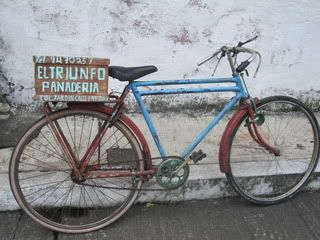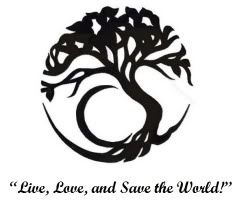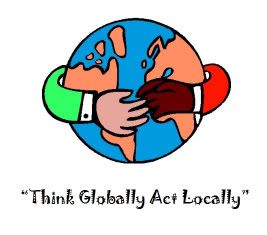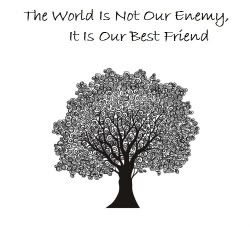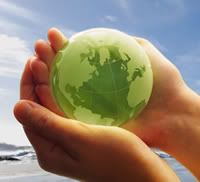As the holiday season is coming and going, you may have received new electronics of some sort. Now, you could just toss the old ones, but there may be a greener (and more profitable!) way to dispose of old electronics.
STWF, our organization, is looking into collecting electronics (in particular, cell phones, but we'll take anything you need to recycle!) for a fundraiser. The organization that we're looking to work with is Gazelle.
Now, we need your feedback. Would you be willing to donate your old electronics to us in order to recycle them through Gazelle? Do you think Gazelle is a good organization, or have you recycled your cell phone through another organization?
Please view the website (http://www.gazelle.com/) and tell us what you think about recycling electronics!
Friday, December 25, 2009
Sunday, December 20, 2009
Live Christmas trees vs fake Christmas trees
**Excuse this for being two days late, I'm a horrible blogger at the moment**
In the last STWF meeting, we touched on this subject briefly. Is it more environmentally friendly to buy a live tree or a fake one? Lets weight out the pros and cons.
Pros(live tree):
* buying a tree can become a family tradition
*the trees are renewable resources
* compostable
*smell great
Cons(live tree):
*fire hazard
* more work
* allergies
* non re plantable (if you buy it without the bulb)
* less trees in the environment
Pros(fake tree):
*last for years
* easy to set up
*almost no effort into up keep
Cons(fake tree):
*made from non renewable petroleum
*cannot be recycled
* the environmental effects that go into making the tree
Many people have their own ideas. So decide, real or fake? Leave us a comment!
Work cited: http://www.thelaboroflove.com/articles/the-pros-cons-of-artificial-versus-real-christmas-trees/
In the last STWF meeting, we touched on this subject briefly. Is it more environmentally friendly to buy a live tree or a fake one? Lets weight out the pros and cons.
Pros(live tree):
* buying a tree can become a family tradition
*the trees are renewable resources
* compostable
*smell great
Cons(live tree):
*fire hazard
* more work
* allergies
* non re plantable (if you buy it without the bulb)
* less trees in the environment
Pros(fake tree):
*last for years
* easy to set up
*almost no effort into up keep
Cons(fake tree):
*made from non renewable petroleum
*cannot be recycled
* the environmental effects that go into making the tree
Many people have their own ideas. So decide, real or fake? Leave us a comment!
Work cited: http://www.thelaboroflove.com/articles/the-pros-cons-of-artificial-versus-real-christmas-trees/
Saturday, December 5, 2009
Cheap Fun
If you're reading this, you're probably on a computer. Well, depending on how long you've been on the computer, it may be time to turn it off and do something else (and I don't mean go watch television).
As we become more dependent on technology, we forget to value the simple things that we had before. Some of these things are actually low-cost and low-energy:
1. Hiking (If you're in San Diego, Florida Canyon is amazing!)
2. Camping
3. Walking
4. Enjoying old photo albums
5. Reading
What are some things that you do that require no electricity/energy consumption? Leave a comment below!
As we become more dependent on technology, we forget to value the simple things that we had before. Some of these things are actually low-cost and low-energy:
1. Hiking (If you're in San Diego, Florida Canyon is amazing!)
2. Camping
3. Walking
4. Enjoying old photo albums
5. Reading
What are some things that you do that require no electricity/energy consumption? Leave a comment below!
Friday, November 27, 2009
The holidays are here(:
Now that Thanksgiving is over, everyone is starting to shop for the people on their gift lists without breaking the budget. Why not splurge a little bit on the ones you love by not buying wrapping paper this year. Instead use newspaper to wrap up gifts or old shopping bags. Why not try an STWF reusable tote? You'll save money, and the environment. Merry Christmas, mother earth.


Friday, November 20, 2009
Going Vegetarian One Day at a Time
As many of us are looking forward to the holiday season where we will be stuffed with turkey, ham, sausage and all other kinds of delicious meat; it might be the time to consider cutting back (or completely eliminating) on meat.
How, you may ask, does cutting back on meat help the environment?
1. Forests are cut down in order to make room for all the grassland needed to support cattle;
2. and not only do those cattle take up tons of room, we need to produce more food to feed them! For every one pound of meat, at least 5 times that (5lbs.) of food was consumed.
3. Less water is needed to sustain a vegetarian diet than a diet that includes meat (although, you can help out just by reducing the amount of meat eaten).
4. Saves the environment, as cattle produce 130 times more waste than the human population which would save a lot of rivers from pollution!
5. The amount of energy used to produce and transport meat amounts to roughly the 1/3 of the U.S.'s energy consumption.
Lastly, going vegetarian is usually a healthier alternative (unless you have some sort of health condition) and it will make you feel better! If you're not ready to commit to a vegetarian lifestyle, please try to go meatless for one day a week (Fridays, anyone?) and add additional days if you begin to enjoy your vegetarian days!
Alternative sources of protein:
-Kidney beans
-Chickpeas
-Soy
-Oatmeal
-Tofu
-Peanut butter
-Yogurt
-Milk
How, you may ask, does cutting back on meat help the environment?
1. Forests are cut down in order to make room for all the grassland needed to support cattle;
2. and not only do those cattle take up tons of room, we need to produce more food to feed them! For every one pound of meat, at least 5 times that (5lbs.) of food was consumed.
3. Less water is needed to sustain a vegetarian diet than a diet that includes meat (although, you can help out just by reducing the amount of meat eaten).
4. Saves the environment, as cattle produce 130 times more waste than the human population which would save a lot of rivers from pollution!
5. The amount of energy used to produce and transport meat amounts to roughly the 1/3 of the U.S.'s energy consumption.
Lastly, going vegetarian is usually a healthier alternative (unless you have some sort of health condition) and it will make you feel better! If you're not ready to commit to a vegetarian lifestyle, please try to go meatless for one day a week (Fridays, anyone?) and add additional days if you begin to enjoy your vegetarian days!
Alternative sources of protein:
-Kidney beans
-Chickpeas
-Soy
-Oatmeal
-Tofu
-Peanut butter
-Yogurt
-Milk
Friday, November 13, 2009
Ten easy ways to save the world(:
1. While waiting for the shower to warm up, catch it in a bucket and use it to water your plants.
2. When you don't need the lights on turn them off or if you're not in a room turn off the lights.
3. By local, organic grown food such as meats, eggs, dairy, fruits, and vegetables.
4. Borrow books and DVDs from the library. It saves ink and paper, and leaves your wallet full!
5. Keep your electronics for as long as possible and then recycle them or give them to a friend.
6. Hike/bike, trolley/bus/ or carpool (our motto) to school or work. It may take longer but it saves gas and fuel emissions and boosts your health!
7. Instead of being mailed bills or bank statements sign up to receive them by email.
8. Winters around the corner but don't go turning up the thermostat, bundle up instead!
9. Compost your food, its good nutrients for your plants.
10. Spread the word about saving the world(:
2. When you don't need the lights on turn them off or if you're not in a room turn off the lights.
3. By local, organic grown food such as meats, eggs, dairy, fruits, and vegetables.
4. Borrow books and DVDs from the library. It saves ink and paper, and leaves your wallet full!
5. Keep your electronics for as long as possible and then recycle them or give them to a friend.
6. Hike/bike, trolley/bus/ or carpool (our motto) to school or work. It may take longer but it saves gas and fuel emissions and boosts your health!
7. Instead of being mailed bills or bank statements sign up to receive them by email.
8. Winters around the corner but don't go turning up the thermostat, bundle up instead!
9. Compost your food, its good nutrients for your plants.
10. Spread the word about saving the world(:
STWF News!
Next Friday, November 20th, STWF will hold a fundraising bake sale in front of the International Studies office (where we have sign ups each Friday morning) at lunch. We will also be selling bags, organic tee shirts, and post consumer recycled shoes (in mens' sizes 9 1/2-13). Shirts are $12, bags are $10, and shoes are $20.
Also, STWF is ordering more shirts and bags with our original design (which make great gifts). We are still open for new designs, though.
Also, STWF is ordering more shirts and bags with our original design (which make great gifts). We are still open for new designs, though.
Friday, November 6, 2009
Balloons & the Environment
Maybe you went to the Homecoming game this night, or you've been to football games and rallies and the whatnot where balloons are absolutely everywhere. They're around all the rails on the side, in those pretty-looking balloon arches... and flying off into the sky.
Let's take things back to physics here: what goes up must come down. Those balloons which become tiny dots in the sky before blinking out of view are going to eventually burst into small fragments that will spread all over our world. Releasing balloons is littering, and the dangerous effects of it can be seen in the deaths of wild, domestic, and farm animals, along with all the creatures of the sea who are unfortunate enough to think that a balloon fragment is a tasty morsel.
Maybe you've heard that latex balloons decompose at the same rate as an oak leaf; which is true. However, the decomposition of an oak leaf is approximately six months (varies under different conditions). Would you leave a piece of trash lying in the same place for six months? Would you toss your trash on the floor?

Releasing balloons into the environment, whether in small or large quantities, is harmful to the world; the world that we need to take better care of. Do your part, and be sure to keep those balloons out of the sky!
Let's take things back to physics here: what goes up must come down. Those balloons which become tiny dots in the sky before blinking out of view are going to eventually burst into small fragments that will spread all over our world. Releasing balloons is littering, and the dangerous effects of it can be seen in the deaths of wild, domestic, and farm animals, along with all the creatures of the sea who are unfortunate enough to think that a balloon fragment is a tasty morsel.
Maybe you've heard that latex balloons decompose at the same rate as an oak leaf; which is true. However, the decomposition of an oak leaf is approximately six months (varies under different conditions). Would you leave a piece of trash lying in the same place for six months? Would you toss your trash on the floor?

Releasing balloons into the environment, whether in small or large quantities, is harmful to the world; the world that we need to take better care of. Do your part, and be sure to keep those balloons out of the sky!
Friday, October 30, 2009
Tissue Paper
The names Kleenex, Puffs, Charmin, Cottonelle, and Bounty all have one thing in common. No, it isn't the fact that they're all disposable paper products, but rather that they all use "virgin fiber" in their products. Basically, that means that entire forests are being cut down just so someone can blow their nose into it.
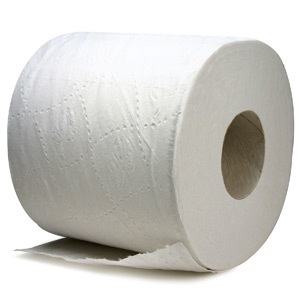
That's certainly unnecessary, considering the amount of alternatives there are. Companies can use post-consumer fiber in their products instead of virgin fiber! We, as consumers, have been naive enough to purchase these name-brand products, but it is time for us to stop. Stay away from those companies until they begin using post-consumer fiber in their products, and wipe your nose with a different brand.
For a list of eco-friendly brands go to: http://www.nrdc.org/land/forests/gtissue.asp

NOTE: STWF is planning on hosting a bake sale on Friday the 13th of this month. Please check back soon for more information.
EDIT: The bake sale has been moved to the 20th. Please come to the meeting on the 13th in order to sign up to bring baked goods!
Friday, October 23, 2009
Bike Riding
Recently, I got my permit. As I've started to drive around, I've noticed the abundance of bikers. The more I see, my day seems to get a bit better. However, only about half of them follow the law. Biker saftey is very important to keep the biker from getting hurt, and even getting a ticket. The safest place for a biker is in the bike lane, if they choose to act like a driver (following traffic lights and stop signs). When on the side walk the biker must act like pedestrian. The law states that anyone under 18 must wear a helmet but it is in the best interest of the biker to wear one, whatever his or her age. Hand signals, seem to be the biggest problem for bikers. When changing lanes or turning you must signal which way you are going(left or right). At night, reflective gear and lights should be used to be seen in the dark. If you aren't already riding your bike to work, go ahead and do so now that you know the rules. For those still hesitant, many bike shops offer a road 101 course. Information provided by: http://www.dmv.ca.gov/about/bicycle.htm
Sunday, October 18, 2009
Potential Designs
If you haven't heard, STWF is looking for a new design. So far, four potential designs have been submitted by Sienna Crespin. To submit designs, either post a comment with a web URL to your design, or email stwfatsdhs@gmail.com!
Saturday, October 17, 2009
Carbon Offsets
It is unavoidable to consume energy, and for a while there hasn't been a way to avoid that. However, since 2003 Carbonfund.org has been working to change that by selling carbon offsets. Their motto: Reduce what you can, offset what you can't.
Carbon offsets is money donated to a company (in this case http://www.carbonfund.org/) which is then used to fund third-party offset projects. The company promises that a certain amount of carbon will be offset by your donation, which of course also depends on how much you donate. For every dollar you donate, a tenth of a ton of a carbon is offset.
Try something new this year during the holidays, and ask for carbon offsets! Let's do our best to keep our world green.
Friday, October 9, 2009
Is saving the world too expensive?
Many people attribute their not becoming environmentally friendly to the cost. I agree, to become more environmentally friendly you do have to give a little, but you will get so much back. For instance, a regular bottle of water costs about two dollars. If you buy one a day, estimated to spend forty dollars a month on water alone! Water from the tap costs about a penny. Investing in a kleankanteen (kleankanteen.com) or something similar is well worth it.
Sunday, July 12, 2009
San Diego River Clean Up
Two members of STWF, Emmy Phillips and Rosie Kloh, spent half a day of their summer cleaning the SD river in partnership with the San Diego River Park Foundation. Thanks guys!
Emmy Phillips (left) Rosie Kloh (right)
Other photos viewable at: http://www.photobucket.com/stwf_photos
Subscribe to:
Posts (Atom)

